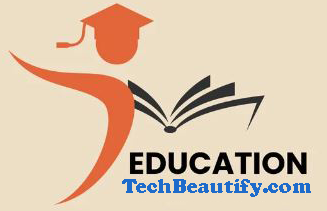Improving Education Quality: Tips for Teachers
Outline
- Introduction
- Understanding Educational Quality
- Definition of educational quality
- Importance in today’s educational landscape
- Challenges in Education
- Common issues affecting educational quality
- Impact on student outcomes
- Effective Teaching Strategies
- Engaging teaching methods
- Personalized learning approaches
- Incorporating technology in the classroom
- Curriculum Development
- Designing a balanced curriculum
- Integrating real-world applications
- Assessment Techniques
- Formative vs. summative assessments
- Continuous evaluation methods
- Teacher-Student Relationships
- Building trust and rapport
- Importance of mentorship
- Professional Development
- Continuous learning for educators
- Workshops and conferences
- Parental Involvement
- Collaborating with parents
- Enhancing support networks
- Creating Inclusive Learning Environments
- Addressing diverse student needs
- Promoting equity and fairness
- Resources for Teachers
- Utilizing educational tools
- Accessing online resources
- Measuring Success
- Metrics for evaluating educational quality
- Long-term impact assessment
- Challenges in Implementation
- Overcoming resistance to change
- Institutional barriers
- Case Studies
- Examples of successful educational reforms
- Lessons learned from innovative practices
- Conclusion
- Recap of key strategies
- Future outlook for improving education quality
Improving Education Quality: Tips for Teachers
Education quality is not just about imparting knowledge; it’s about fostering an environment where students thrive intellectually, emotionally, and socially. As educators, your role in enhancing educational quality is pivotal. This article provides practical tips and strategies to help teachers elevate their teaching practices and contribute positively to the educational experience.
Introduction
In today’s dynamic world, the demand for high-quality education is more pressing than ever. Educational quality encompasses various facets, including curriculum design, teaching methodologies, assessment practices, and the overall learning environment. By focusing on these areas, teachers can significantly impact student engagement, retention, and academic success.
Understanding Educational Quality
Educational quality refers to the extent to which education fulfills its intended purpose—equipping students with the knowledge, skills, and competencies necessary for future endeavors. It goes beyond traditional metrics of academic achievement to encompass holistic development and lifelong learning capabilities.
Definition of Educational Quality
Educational quality is defined by the effectiveness of educational processes in achieving desired outcomes, such as critical thinking, problem-solving, and ethical reasoning.
Importance in Today’s Educational Landscape
In a globalized economy driven by innovation, educational quality serves as a cornerstone for social mobility, economic growth, and sustainable development.
Challenges in Education
Despite efforts to enhance educational quality, educators face numerous challenges that hinder effective teaching and learning experiences.
Common Issues Affecting Educational Quality
- Limited resources and funding constraints
- Class size and student-teacher ratios
- Socioeconomic disparities impacting access to quality education
Impact on Student Outcomes
Challenges in educational quality can lead to disparities in student achievement, hindered socio-emotional development, and reduced opportunities for future success.
Effective Teaching Strategies
To improve educational quality, teachers can adopt innovative teaching strategies that cater to diverse learning styles and foster active student engagement.
Engaging Teaching Methods
Utilize active learning techniques, such as group discussions, problem-based learning, and project-based assignments, to encourage collaboration and critical thinking.
Personalized Learning Approaches
Differentiate instruction to accommodate individual student needs and preferences, promoting a personalized learning experience that enhances comprehension and retention.
Incorporating Technology in the Classroom
Integrate educational technology tools and digital resources to create interactive lessons, facilitate virtual collaboration, and enhance information access.
Curriculum Development
A well-rounded curriculum is essential for promoting educational quality, offering a balanced blend of academic rigor and practical relevance.
Designing a Balanced Curriculum
Develop comprehensive learning objectives aligned with educational standards and learning outcomes, ensuring breadth and depth across subject areas.
Integrating Real-World Applications
Include real-world scenarios and interdisciplinary perspectives to connect classroom learning with practical experiences, enhancing relevance and applicability.
Assessment Techniques
Effective assessment practices provide valuable insights into student progress and inform instructional decisions to optimize learning outcomes.
Formative vs. Summative Assessments
Implement a mix of formative assessments (e.g., quizzes, peer reviews) and summative assessments (e.g., exams, projects) to monitor student growth and evaluate overall achievement.
Continuous Evaluation Methods
Utilize ongoing assessments and feedback loops to gauge student comprehension, identify areas for improvement, and promote continuous learning and development.
Teacher-Student Relationships
Building positive relationships with students fosters a supportive learning environment conducive to academic success and personal growth.
Building Trust and Rapport
Establish open communication channels, show empathy, and demonstrate respect for student perspectives to cultivate trust and mutual respect.
Importance of Mentorship
Serve as a mentor and role model, offering guidance, encouragement, and academic support to empower students in their educational journey.
Professional Development
Continuous professional development is essential for educators to stay abreast of emerging trends, best practices, and pedagogical advancements.
Continuous Learning for Educators
Attend workshops, seminars, and online courses to expand knowledge, refine teaching techniques, and enhance professional competencies.
Workshops and Conferences
Participate in professional conferences and peer collaboration opportunities to exchange ideas, share experiences, and network with fellow educators.
Parental Involvement
Engaging parents as partners in education strengthens the support system around students, promoting academic achievement and holistic development.
Collaborating with Parents
Encourage parental involvement through regular communication, parent-teacher meetings, and family engagement initiatives to reinforce learning goals and address student needs.
Enhancing Support Networks
Establish community partnerships and resources to support students’ academic, social, and emotional well-being both inside and outside the classroom.
Creating Inclusive Learning Environments
Promoting inclusivity and equity in education ensures all students have equal access to learning opportunities and support systems.
Addressing Diverse Student Needs
Adopt inclusive teaching practices that accommodate diverse learning styles, cultural backgrounds, and individual abilities to create a welcoming and supportive classroom environment.
Promoting Equity and Fairness
Implement policies and practices that mitigate bias, foster diversity, and ensure equitable access to resources, opportunities, and educational outcomes for all students.
Resources for Teachers
Access to educational tools, resources, and professional networks empowers teachers to enhance instructional practices and student engagement.
Utilizing Educational Tools
Explore digital platforms, teaching aids, and interactive resources to supplement curriculum delivery, facilitate student-centered learning, and encourage academic exploration.
Accessing Online Resources
Utilize online repositories, educational websites, and virtual libraries to access teaching materials, lesson plans, and research-based strategies for effective instruction.
Measuring Success
Monitoring and evaluating educational quality metrics provide insights into the effectiveness of teaching strategies and student outcomes over time.
Metrics for Evaluating Educational Quality
Track academic performance indicators, graduation rates, student retention, and stakeholder feedback to assess educational impact and inform continuous improvement efforts.
Long-Term Impact Assessment
Conduct longitudinal studies and alumni surveys to evaluate the long-term impact of educational initiatives on graduates’ career readiness, life skills, and societal contributions.
Challenges in Implementation
Implementing strategies to improve educational quality may encounter resistance and systemic barriers that require proactive solutions and stakeholder engagement.
Overcoming Resistance to Change
Address institutional inertia, stakeholder concerns, and cultural barriers through effective communication, evidence-based advocacy, and collaborative decision-making.
Institutional Barriers
Navigate administrative constraints, policy limitations, and resource allocation challenges to foster a supportive environment for educational innovation and improvement.
Case Studies
Examining successful educational reforms and innovative practices provides valuable insights and actionable strategies for enhancing educational quality.
Examples of Successful Educational Reforms
Highlight case studies of schools, districts, or educational programs that have successfully implemented strategies to improve educational quality and student outcomes.
Lessons Learned from Innovative Practices
Extract lessons learned, best practices, and replicable strategies from exemplary educational initiatives to inspire and guide educators in their improvement efforts.
Conclusion
Improving education quality requires a multifaceted approach that integrates effective teaching strategies, curriculum innovation, assessment practices, and collaborative partnerships. By prioritizing student-centered learning, fostering inclusive environments, and embracing continuous professional development, educators can create transformative educational experiences that empower students for success in a rapidly evolving world.
FAQs
- What are the key components of educational quality? Educational quality encompasses effective teaching methods, curriculum relevance, assessment practices, and supportive learning environments.
- How can teachers promote inclusive education? Teachers can promote inclusivity by adopting diverse teaching strategies, accommodating different learning styles, and fostering a culture of respect and equity in the classroom.
- Why is parental involvement crucial for improving education quality? Parental involvement strengthens the support system around students, enhances communication between home and school, and promotes holistic student development.
- What role does technology play in enhancing educational quality? Technology facilitates interactive learning experiences, expands access to educational resources, and supports personalized learning initiatives tailored to individual student needs.
- How can educators measure the success of educational quality initiatives? Success can be measured through academic performance metrics, student feedback, graduation rates,

